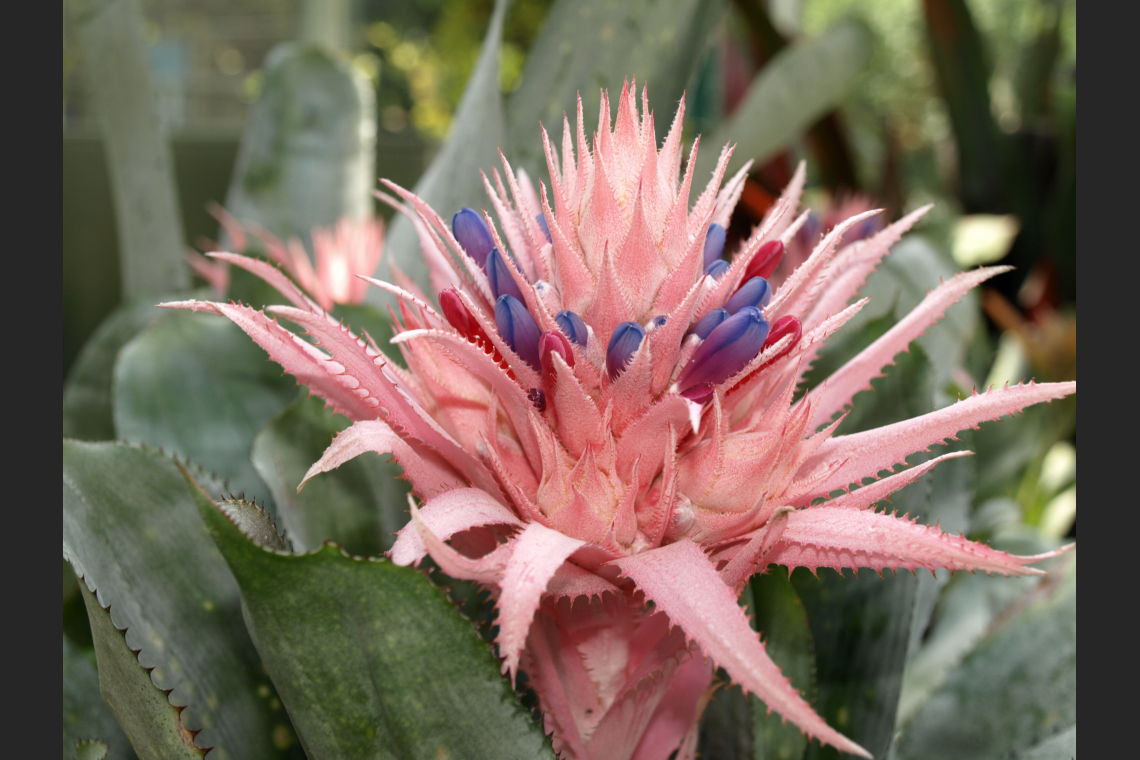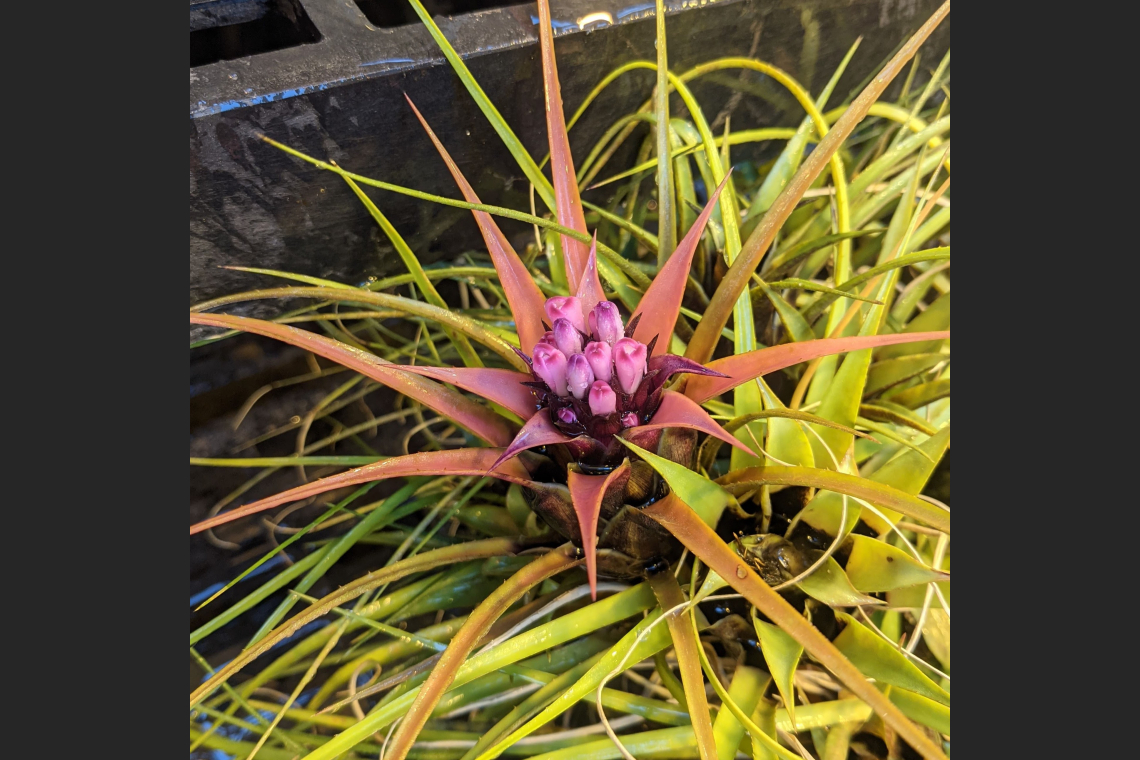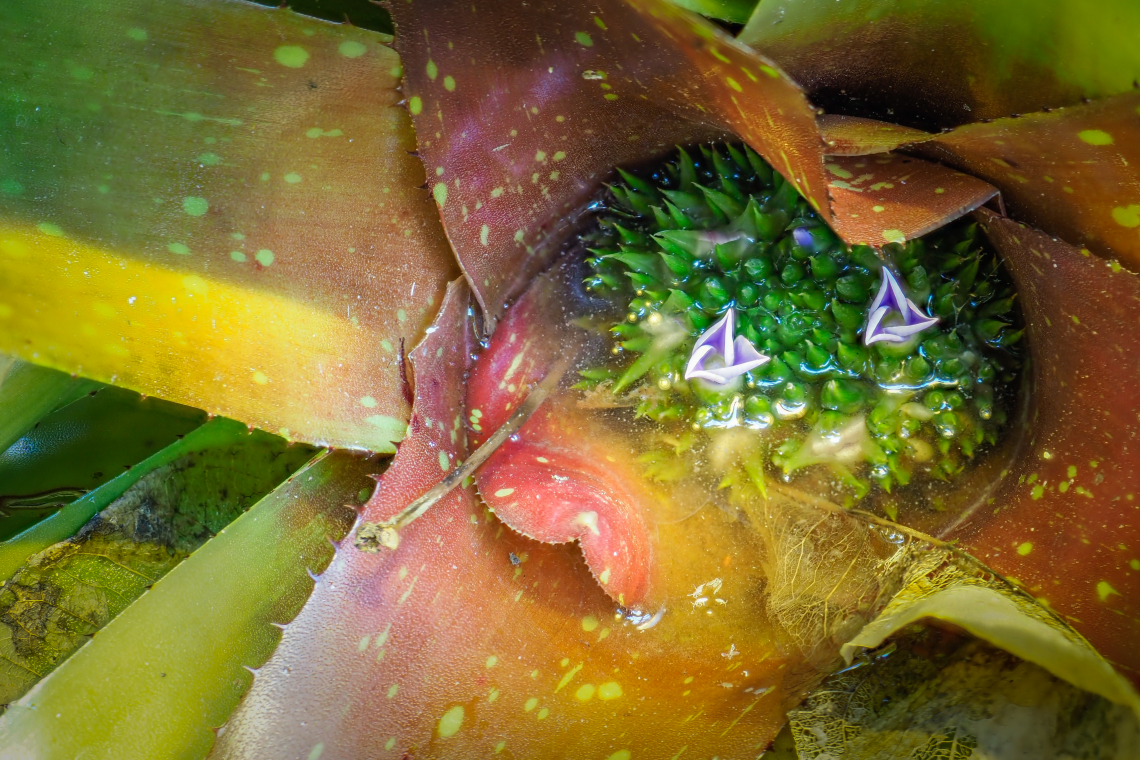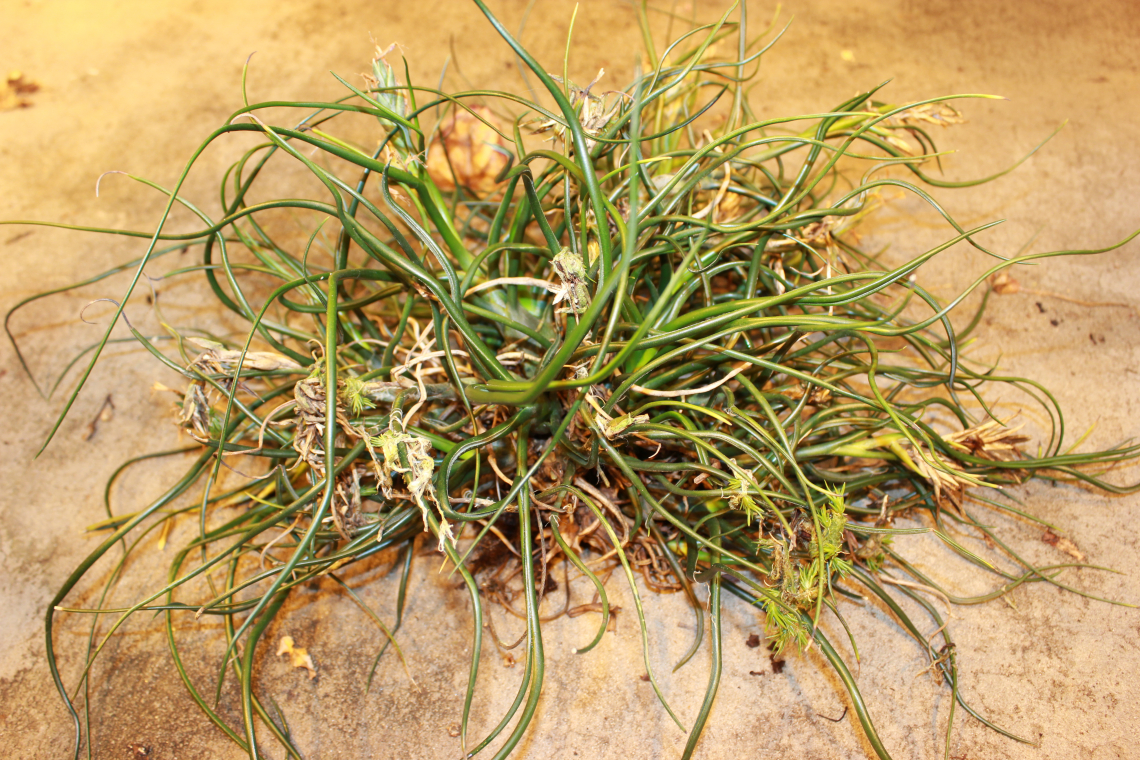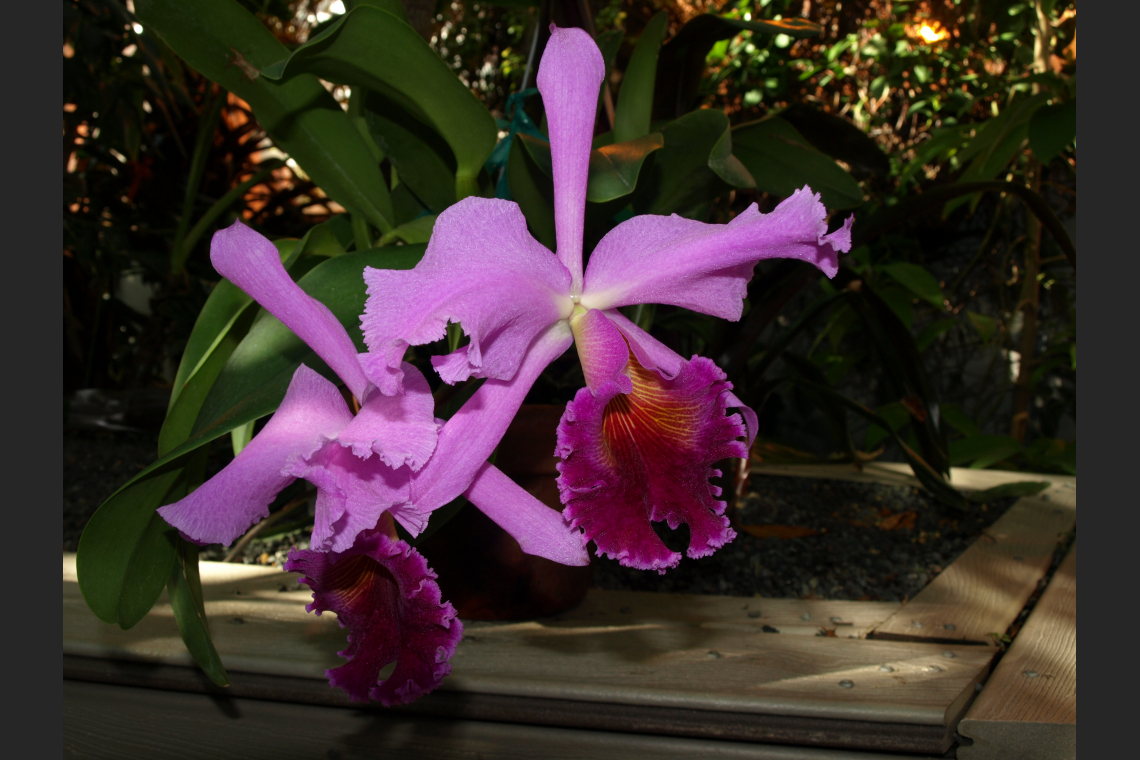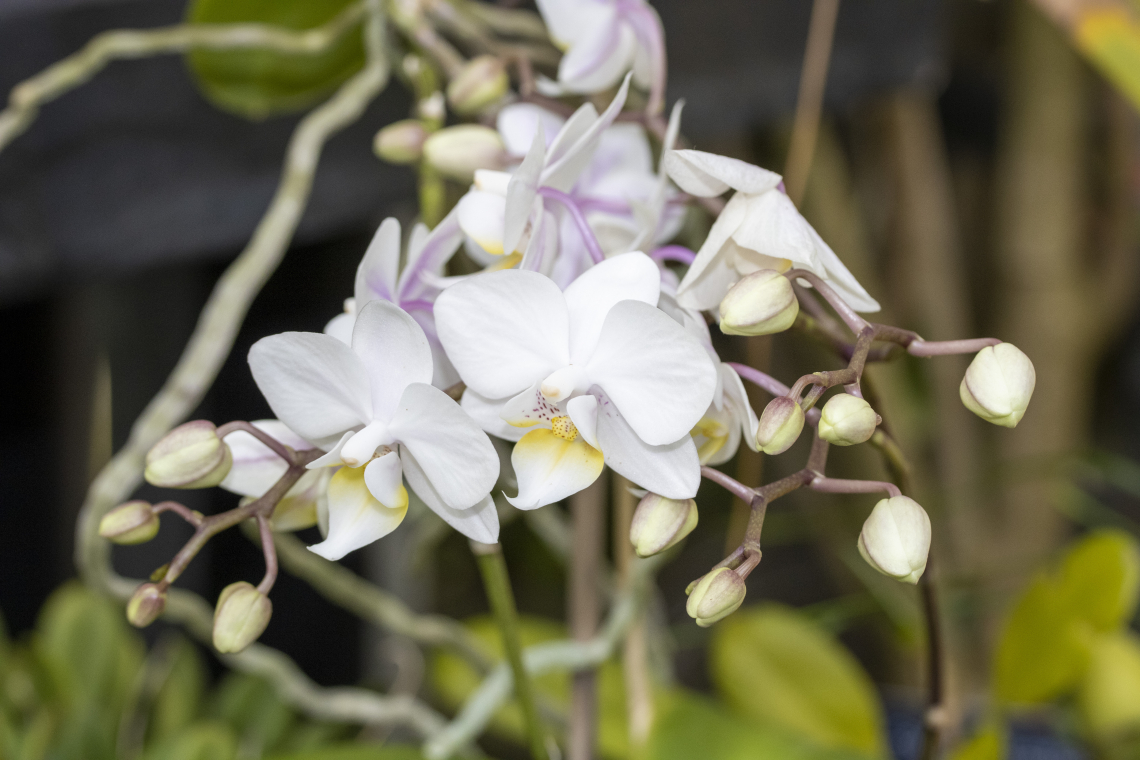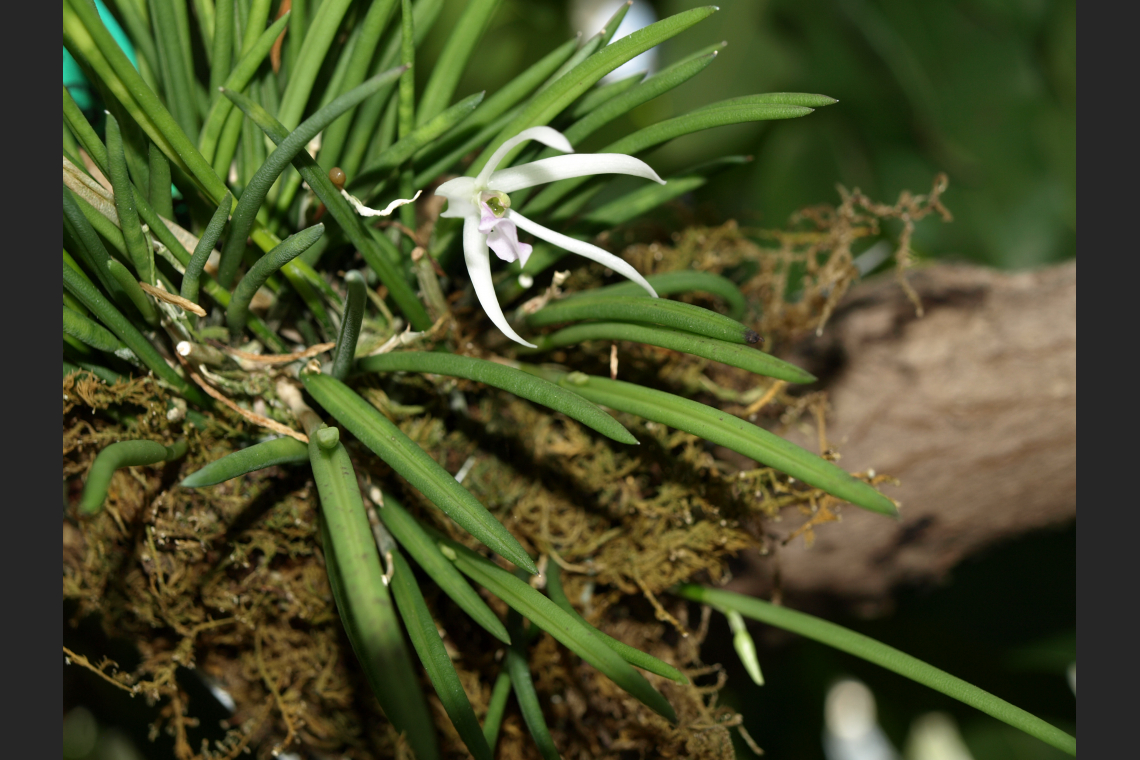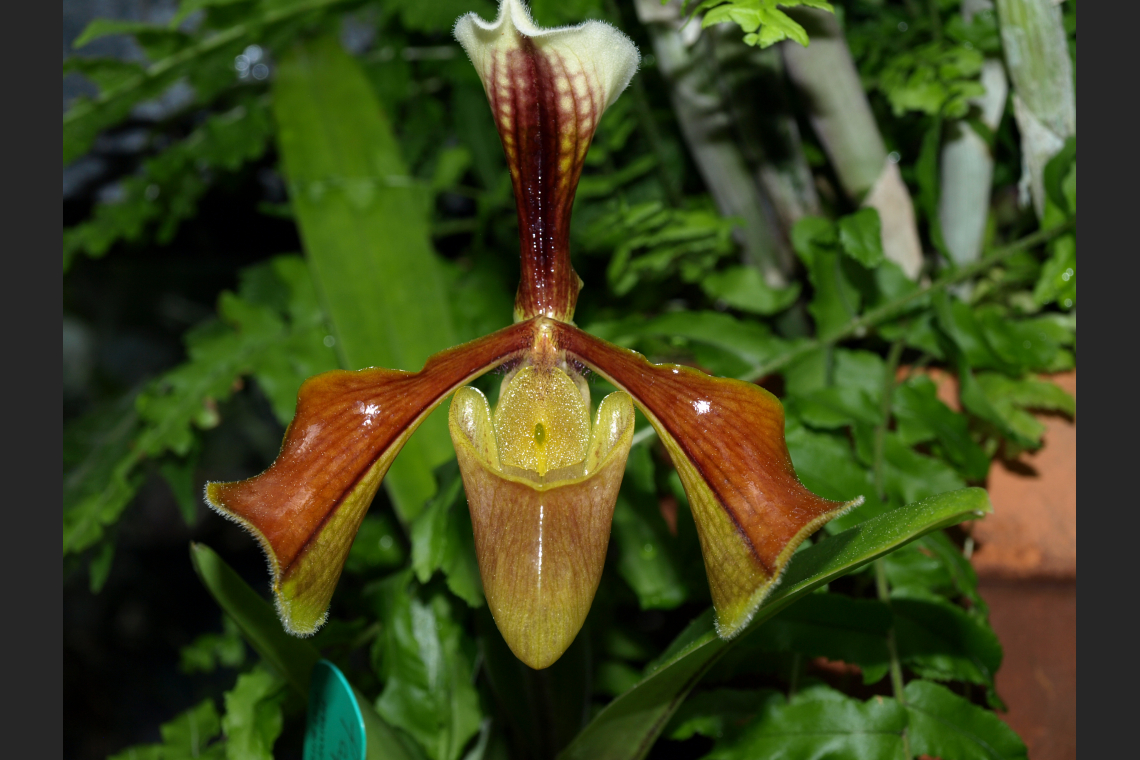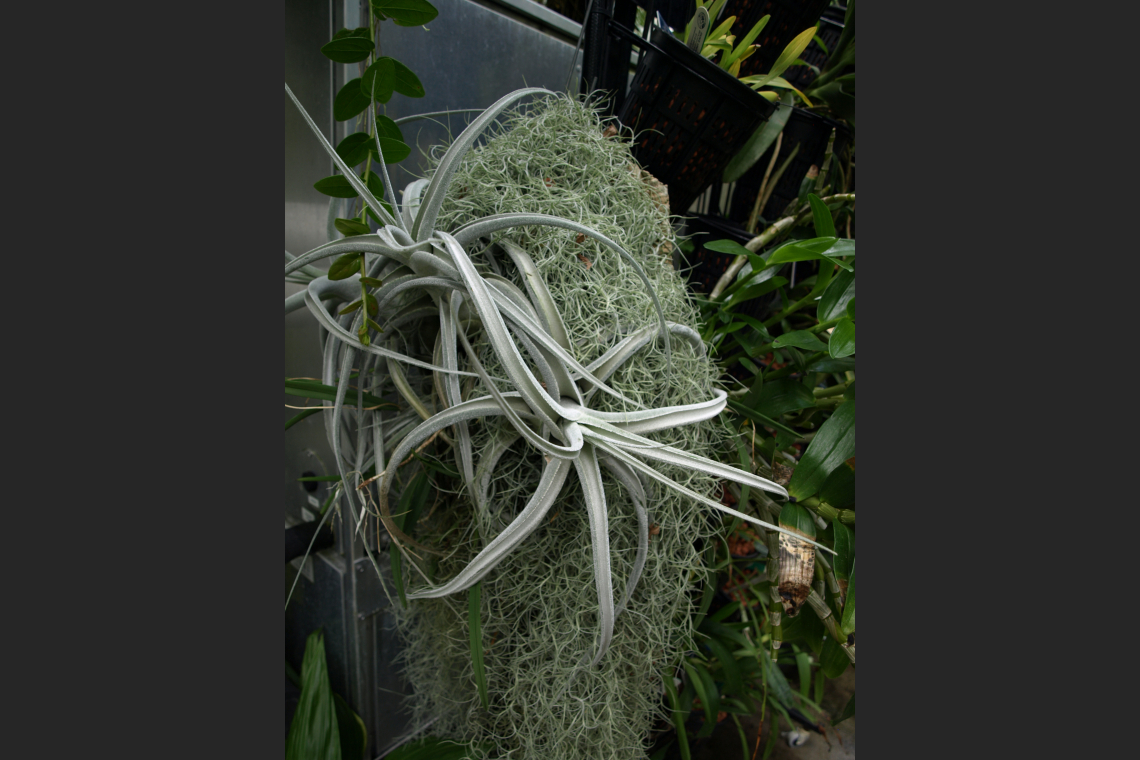Epiphytes are plants that live on top of other plants. Orchids and bromeliads are the best-known examples, and both families are very well-represented in our collection.
Epiphytes don’t root into the ground, so they must get their water and their nutrients from the air, or from the trunk of the tree on top of which they are growing. They are not parasitic, though. They don’t take anything away from their host plant.
Orchids and bromeliads use different strategies to get water. Orchids have long roots covered in a paper-thin membrane that can absorb a lot of water, either from rain, or from water collecting on the bark or between branches of their host plant.
Bromeliads don’t all use the same strategy. Tank bromeliads’ leaves are arranged in a spiral, forming a little cup at their center. This cup collects rainwater and attracts insects and microorganisms, which give the plant their nutrients. Other bromeliads, such as air plants and Spanish moss, have fuzzy leaves that grab moisture from the air.
Not all orchid and bromeliads are epiphytes, though. Some grow on the ground, with roots. Pineapples are a very well-known ground bromeliad, whose fruit you can find in most grocery stores. The Pink Lady-Slippers are an example of a ground orchid that can be found here in North Carolina.
Our collection includes dozens of species of both ground and epiphytic orchids and bromeliads.
